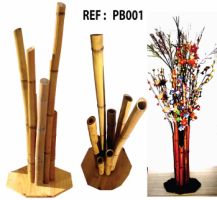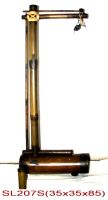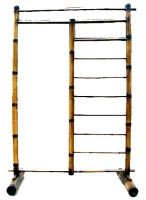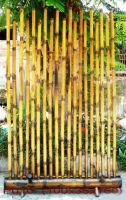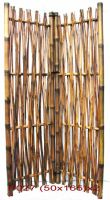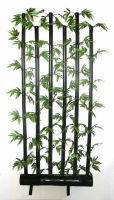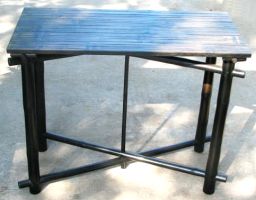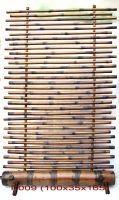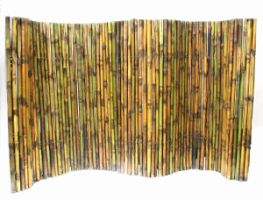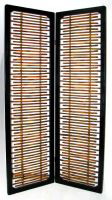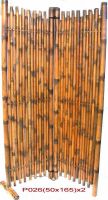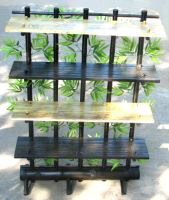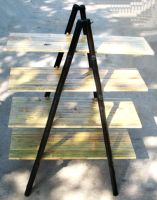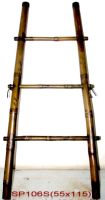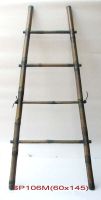Extra Bamboo & All in Bamboo
BAMBOO DISPLAYLAYOUTS ♦ LADDERS ♦ SHELFS ♦ SCREENS FOLDER ♦ FENCES ♦ HAMMOCKS ♦ ACCESSORIESAll Our Bamboo Models are Adaptable to Desired Dimensions |
|
|
Description Bamboo is part of the grass family, so it is a giant grass ! It holds the record of growth of the plant world (up to 1 meter per day for some species) It is found mostly in Asia, South America and Africa. The Matter The thatch (stem) consists of cellulose fibers, such as a tree, but unlike wood its long fibers contain lignin and silica. The hollow morphology of the bamboo associated with its nodes uniformly distributed on the stem increases its lateral resistance. Its longitudinal and vertical mechanical strength is much superior to that of steel (resistance: 1 ton / cm2), it is flexible, light and flexible at will. Solid internodes, hollow structure, longitudinal fibers, absence of knots, allow it to have mechanical performances superior to wood, with equal mass and / or volume. The density of the bamboo varies from 500 to 800 kg / m3. Its mechanical properties differ depending on the species, age (optimum at 3-4 years). It is as resistant as wood, and species are more resistant than Shorea robusta, and Tectona grandis (Sattar, 1995) When subjected to a high temperature, it easily bends and retains its artificial shape without losing its elasticity or its strength, it has a relative non-flammability. Bamboo is flexible, but it is hard because it contains a high silica content. It is not surprising that his nickname is green steel. One of the environmental advantages of bamboo is the little energy required for its production and its use. This enormous advantage is explained throughout its life cycle : its crop does not really require agricultural inputs (fertilizers, phytosanitary treatments, which require a lot of energy for their production and use), and its harvest is manual. Its transport and processing do not require large, energy-intensive machines. A bamboo structure can last easily 30 years, having been properly treated during its design. Rapid growth, and therefore its ability to regenerate, make it a renewable resource. Combined with an important but permeable plant litter (narrow leaves), it is estimated that 25% of the rainfall penetrates into the soil, double that for a deciduous forest. And especially its harvest, carried out in a reasoned way, cutting only the mature stems of 3-4 years, does not damage the system of bamboo forest. |
We present only part of our BAMBOO articles on this page because the choice is too great : Chairs, Sofas, Tables and more ...
-----> FURNITURES BAMBOO <-----
Bamboo is a plant species that combines beauty, utility and ecological value : - shore stabilization - contains the rivers in floods thanks to its intertwined roots - erosion control - windbreak more effective than a conventional hedge - renewal of oxygen: 30% higher than trees - makes it possible to combat deforestation effectively Various Uses - construction - bamboo reinforced cement - polyester resin reinforced with bamboo - plywood - parquet - furniture - various utensils - pulp paper - medicine (against asthma and respiratory diseases) - food (edible shoots for certain varieties)
|
|
Bamboo is a particularly resistant material. Bamboo is also used for the production of paper (80% of Indian production) and textile. If the detractors of bamboo constantly recall that it is not the solution to all the evils of the planet, it remains that the ecological, medicinal and mechanical virtues of the giant grass have not finished We astonish throughout this 21st century ! It resists better, on average than wood to the solvency of water, it is stainless, waterproof and rotproof. |
|













































































